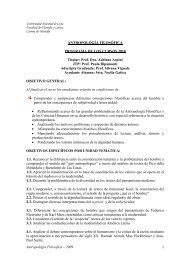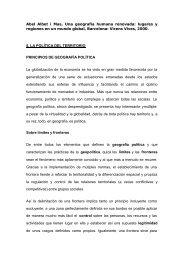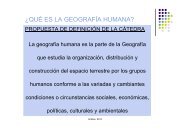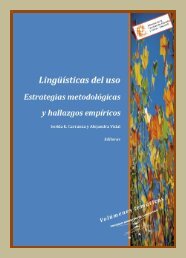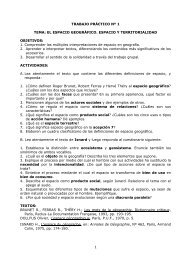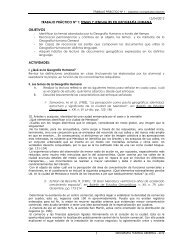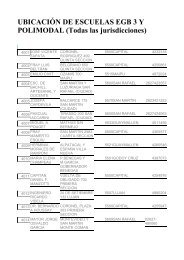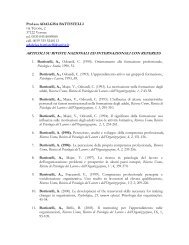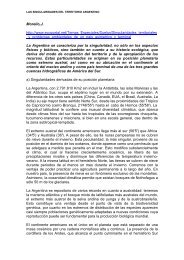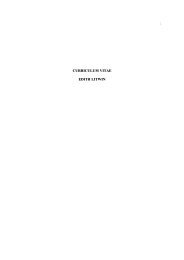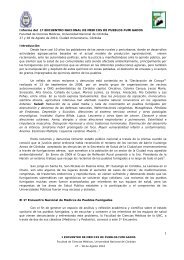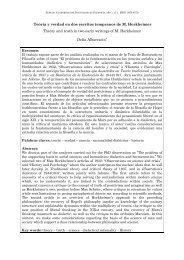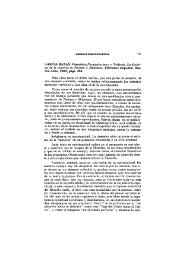o guardar revista - Facultad de FilosofÃa y Letras - Universidad ...
o guardar revista - Facultad de FilosofÃa y Letras - Universidad ...
o guardar revista - Facultad de FilosofÃa y Letras - Universidad ...
You also want an ePaper? Increase the reach of your titles
YUMPU automatically turns print PDFs into web optimized ePapers that Google loves.
El sufijo –ing: categorías gramaticales y funcionessintácticas en el discurso científico-técnicoMónica Lapegna<strong>Universidad</strong> Nacional <strong>de</strong>l ComahueNeuquén, Argentinamonicalapegna@yahoo.com.arResumenEl sufijo -ing se caracteriza por ser un formante morfológico in<strong>de</strong>terminado encuanto a su categoría gramatical. En el marco <strong>de</strong> la enseñanza <strong>de</strong>l ingléscomo lengua extranjera, las piezas léxicas terminadas con -ing suelen presentarcierta complejidad para su procesamiento y comprensión. Esto se <strong>de</strong>be a que elmismo sufijo pue<strong>de</strong> generar una multiplicidad <strong>de</strong> categorías gramaticales sumadoal hecho <strong>de</strong> que, en ciertos casos, pue<strong>de</strong> presentarse en contextos que secaracterizan por ser ambiguos estructuralmente. Este trabajo tiene como objetivorevisar algunos conceptos teóricos acerca <strong>de</strong> los comportamientos morfosintácticos<strong>de</strong>l sufijo -ing para luego hacer un relevamiento y clasificación <strong>de</strong>aquellas estructuras gramaticales más frecuentes en los textos académicos y <strong>de</strong>divulgación en el área técnica.Palabras clave: afijo in<strong>de</strong>terminado; enseñanza <strong>de</strong> una lengua extranjera;categorías gramaticales; función sintáctica ; discurso científico/técnicoAbstractThe -ing suffix is assumed to be an in<strong>de</strong>terminate and category-neutral affix.Within the framework of teaching English as a foreign language, the lexical itemsending with the -ing suffix may usually result in some processing problems whentranslating them into Spanish. This is mainly due to its grammatical diversityand also to the fact that, in some cases, it may appear in contexts that arecharacterized by being structurally ambiguous. The aim of this work is to reviewsome theoretical aspects about the morpho-syntactic behavior of this suffix so asto select and classify those grammatical structures that are most frequently foundin scientific and aca<strong>de</strong>mic texts in the technical field.Key words: in<strong>de</strong>terminate affix; foreign language teaching; grammatical categories;syntactic function; scientific/technical discourseRecibido: 01/VIII/2012LyCE Estudios 15/2012: 67-81Aceptado: 14/XI/2012



